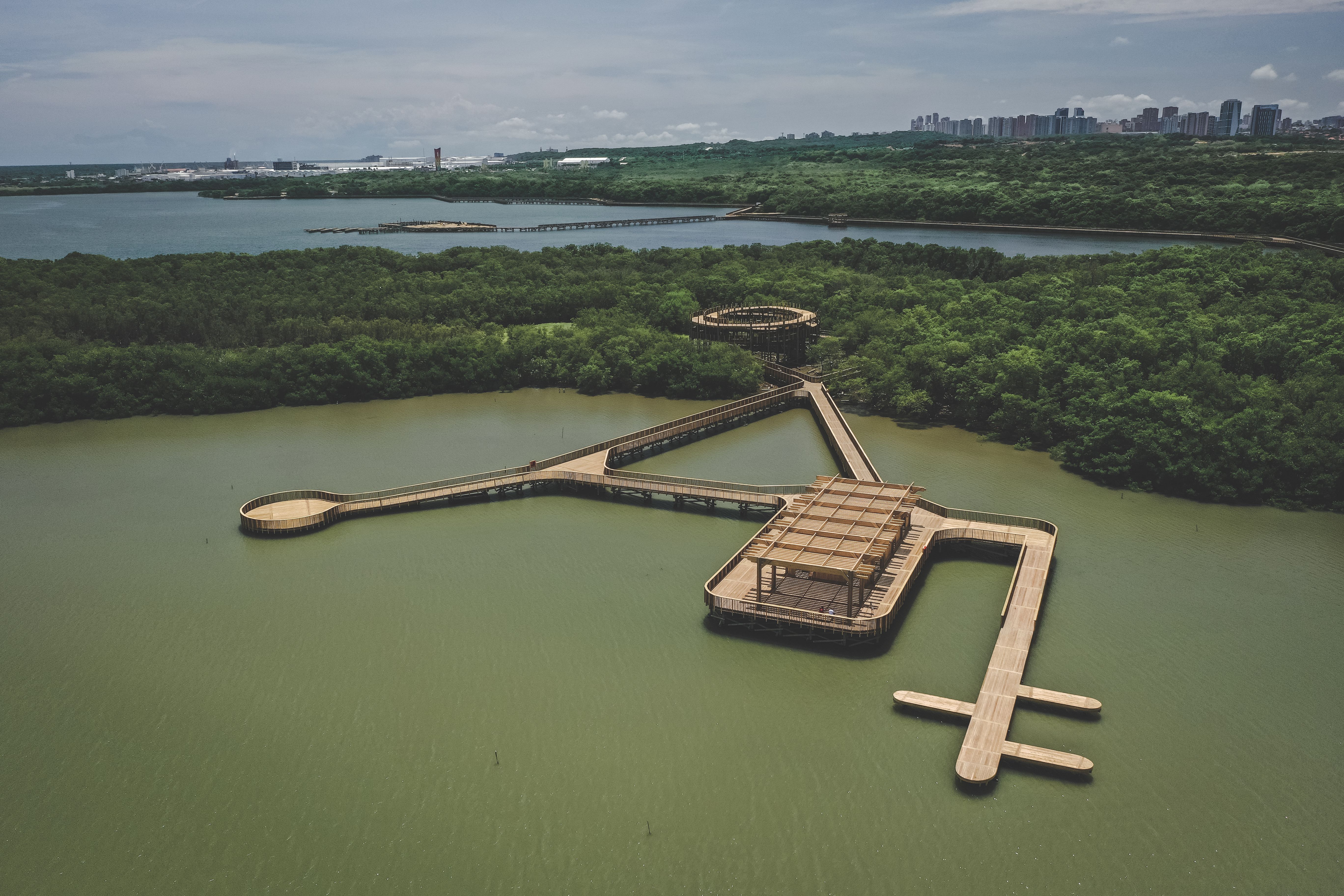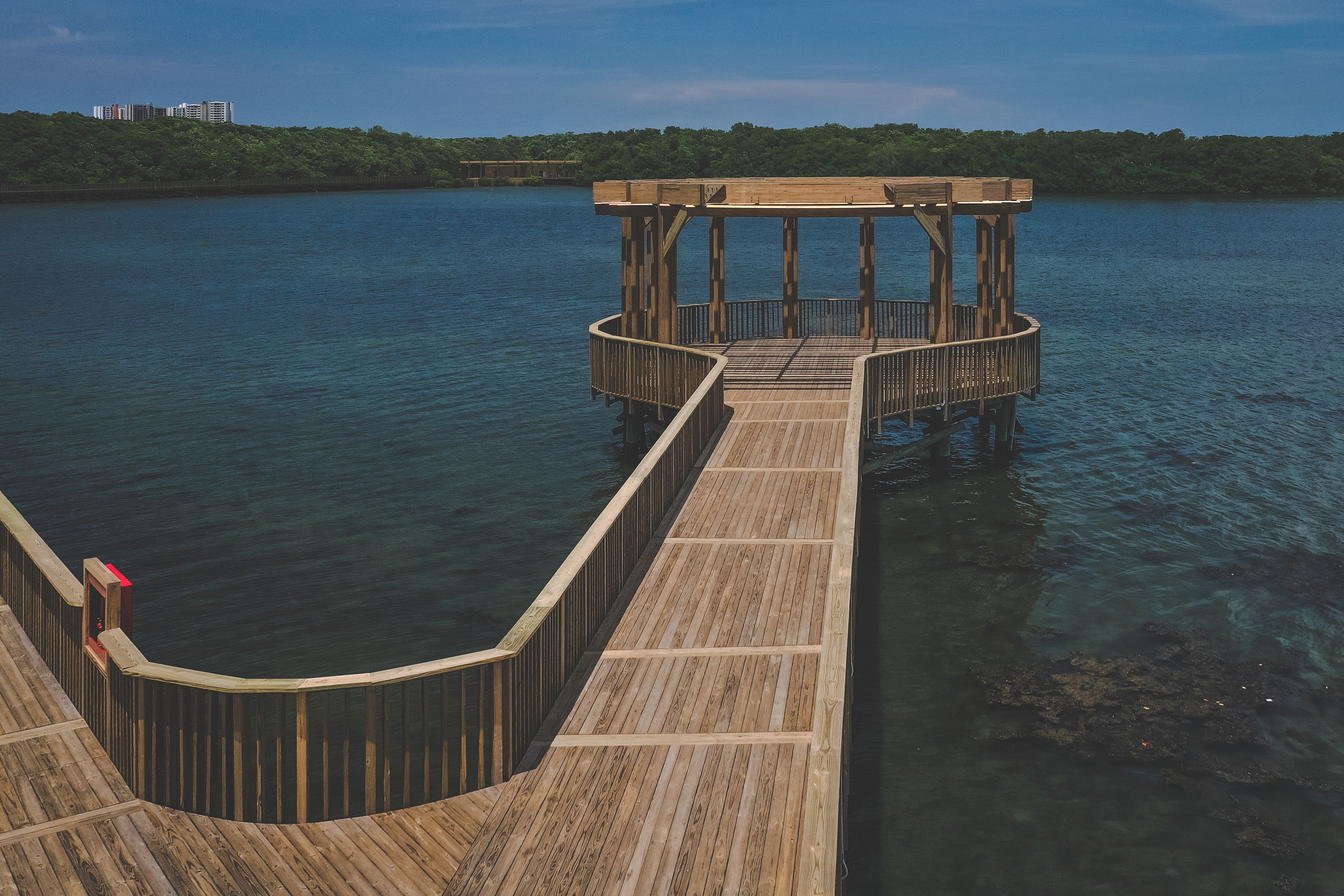Eco-park Ciénaga de Mallorquín protects fragile mangroves and the beauty of Colombian wildlife
Ciénaga de Mallorquín is a collaboration between Francisco Ricardo (of Barranquilla-based DEB) and Giancarlo Mazzanti (of Bogotá-based Equipo Mazzanti), to protect and preserve Colombian flora and fauna

The Ciénaga de Mallorquín, a lagoon north of Barranquilla on Colombia's Caribbean coast, stands out – even for a country rich in natural beauty and biodiversity. A fundamental part of the city’s identity, the estuary wetland is the result of the confluence of the Magdalena River and the sea. It hosts four of the five mangrove species found in Colombia and is teeming with a rich variety of flora and fauna –including a mind-bending array of birdlife.
Sadly, this fragile environment has been in jeopardy for decades, starting with the construction of the Bocas de Ceniza canal almost 100 years ago and continuing with rapid urban expansion, which together has resulted in extreme pollution and the erosion of the fragile mangrove forest habitat and its diverse inhabitants.

Ciénaga de Mallorquín: a Colombia eco-park haven
But a ten-year, seven-phase civic master plan for a new eco-park is working to reverse the destruction and promote rebirth by proposing a sustainable relationship between the city and this important natural resource.
The result of a collaboration between Francisco Ricardo (of Barranquilla-based DEB) and Giancarlo Mazzanti (of Bogotá-based Equipo Mazzanti), the plan encompasses 1,600 acres and will eventually include 10km of boardwalks that connect the city with the various natural elements of the location, thwarting urban growth and promoting an appreciation of nature while also preserving the local fishing culture and hosting a wealth of recreational activities. The first two phases, with a price tag of $32 million (USD), were completed at the end of last year and comprise 4.4km of pathways.

The challenge, points out Ricardo, was finding a solution that would be mutually beneficial for both the ecosystem and the human population. 'We asked ourselves: how can we bring the city to this beautiful lake – that was not previously reachable –in a responsible way?' The municipality dictated the use of wood, so the team selected sustainably farmed yellow pine for its resilience.

The inland portions of the boardwalk follow existing paths made by local fishermen while the segments that cross the water are formally based on the mangrove forest’s root structure. 'We are interconnecting and helping preserve the unique landscape of river, lake, and sea with a literal pathway system,' says Mazzanti, 'so that we can show all Colombians – and the world – the beautiful environment we have here.' On a typical weekend, families, runners, and bird watchers explore the network of paths while kayakers and kite surfers take to the water.

Construction is currently underway on the next phases and includes the extension of the path on the park’s coastline as well as the revival of a defunct rail line (and addition of a new train station) that will carry visitors to the beach. Anticipated completion is 2030.
Receive our daily digest of inspiration, escapism and design stories from around the world direct to your inbox.

The former managing editor of Architectural Record and The New York Observer, Beth Broome writes about architecture, design, urbanism, and culture. She is based in Brooklyn, New York.
-
 Robert Therrien's largest-ever museum show in Los Angeles is enduringly appealing
Robert Therrien's largest-ever museum show in Los Angeles is enduringly appealing'This is a Story' at The Broad unites 120 of Robert Therrien's sculptures, paintings and works on paper
-
 The Wallpaper* style team recall their personal style moments of 2025
The Wallpaper* style team recall their personal style moments of 2025In a landmark year for fashion, the Wallpaper* style editors found joy in the new – from Matthieu Blazy’s Chanel debut to a clean slate at Jil Sander
-
 Tokyo’s most cinematic stay reopens as an exercise in architectural self-control
Tokyo’s most cinematic stay reopens as an exercise in architectural self-controlPark Hyatt Tokyo and Studio Jouin Manku demonstrate how design can evolve without erasing memory, balancing modernist heritage with contemporary comfort
-
 A Medellin house offers art, brutalism and drama
A Medellin house offers art, brutalism and dramaA monumentally brutalist, art-filled Medellin house by architecture studio 5 Sólidos on the Colombian city’s outskirts plays all the angles
-
 Casa Cuore is the newest home by Colombian tastemakers 5 Solidos
Casa Cuore is the newest home by Colombian tastemakers 5 SolidosCasa Cuore, a new residential design by 5 Solidos in Medellin, Colombia, complements its striking natural surroundings